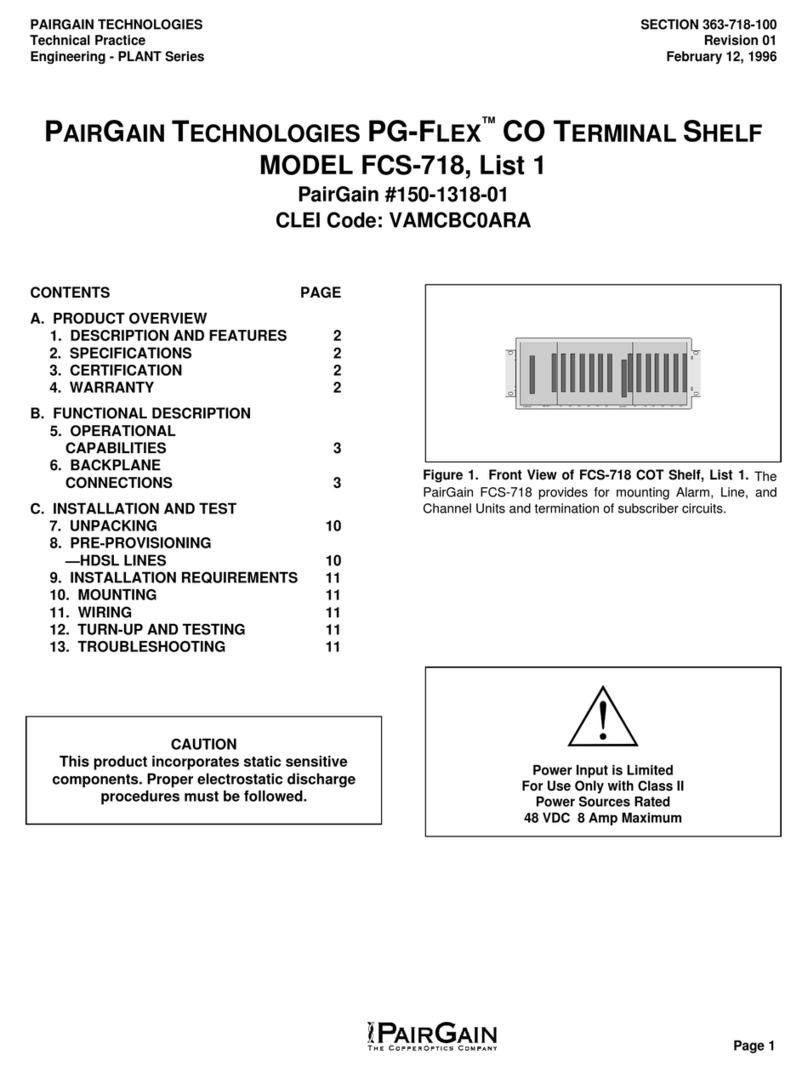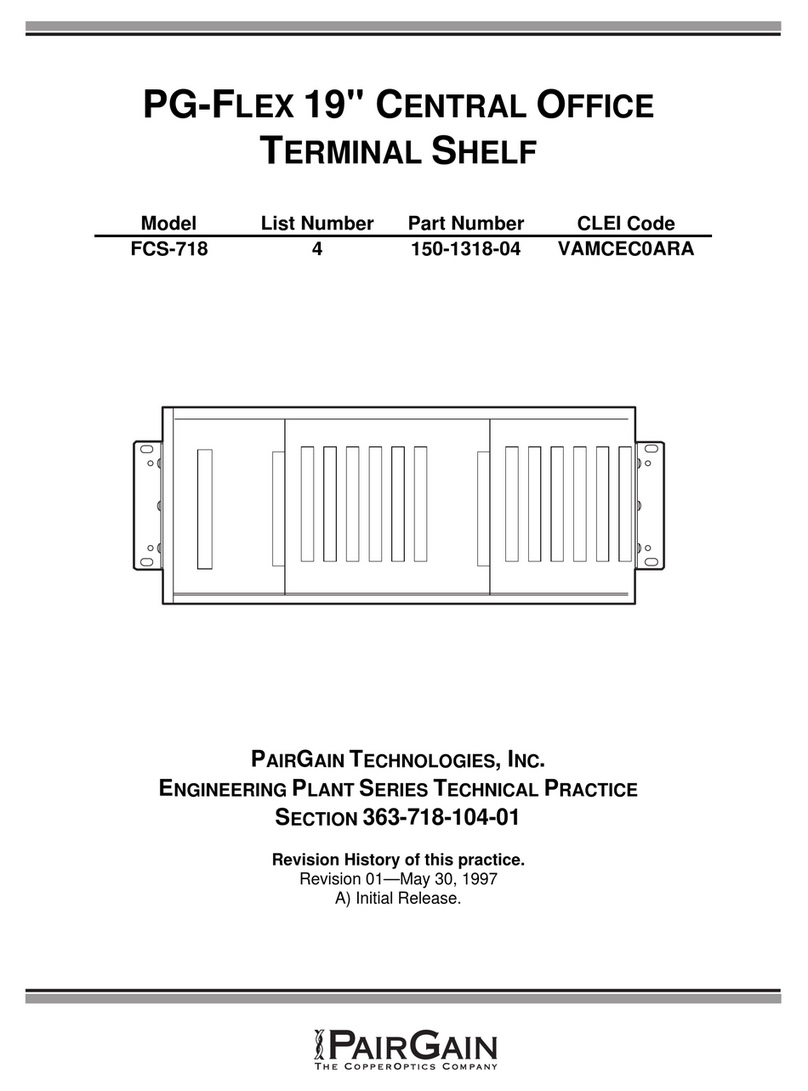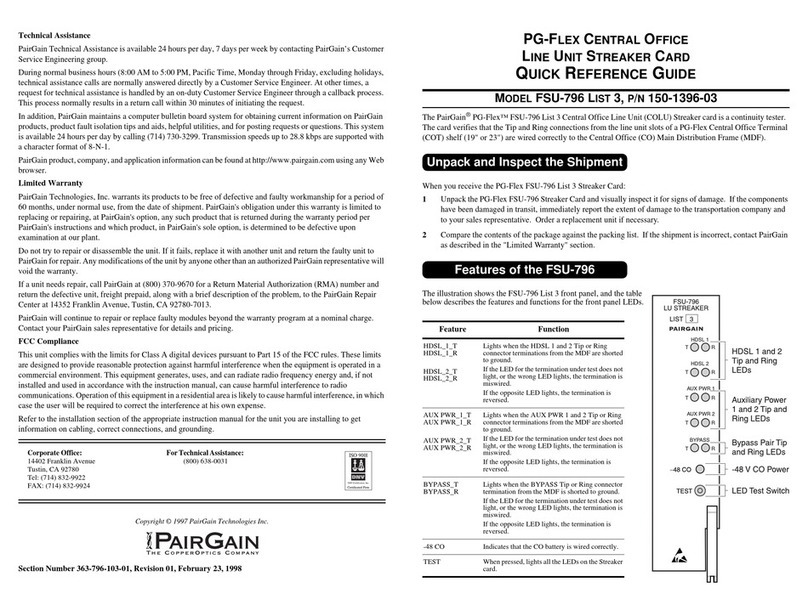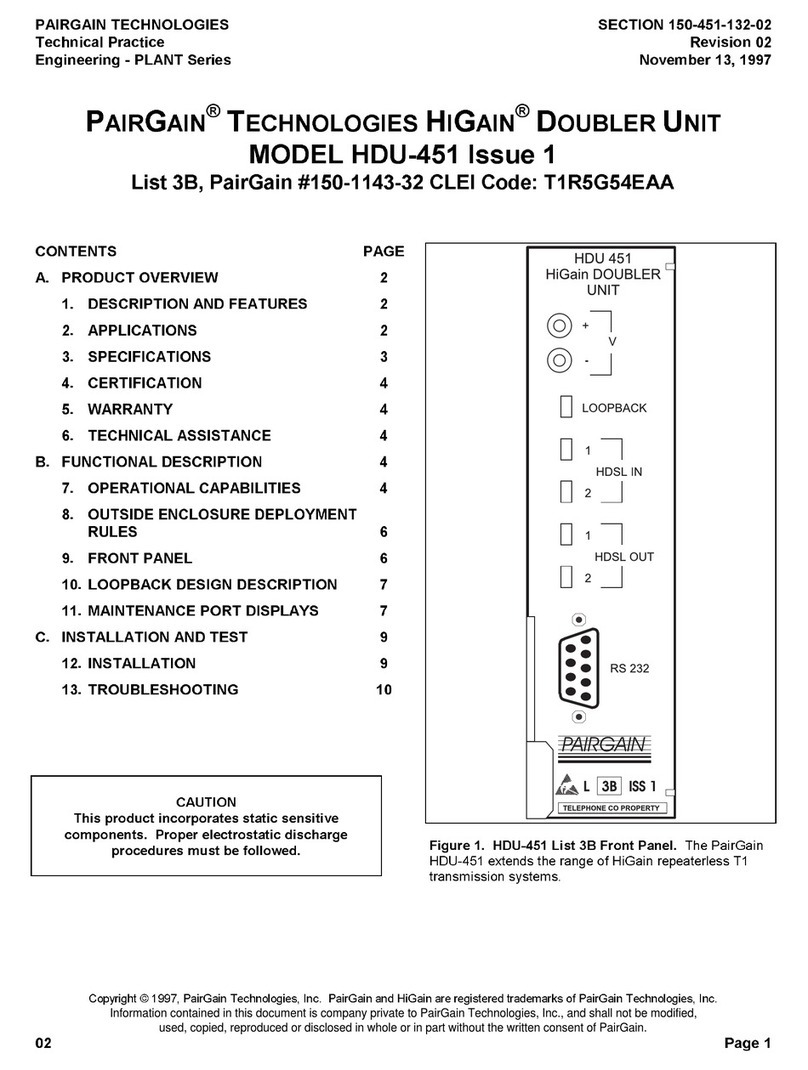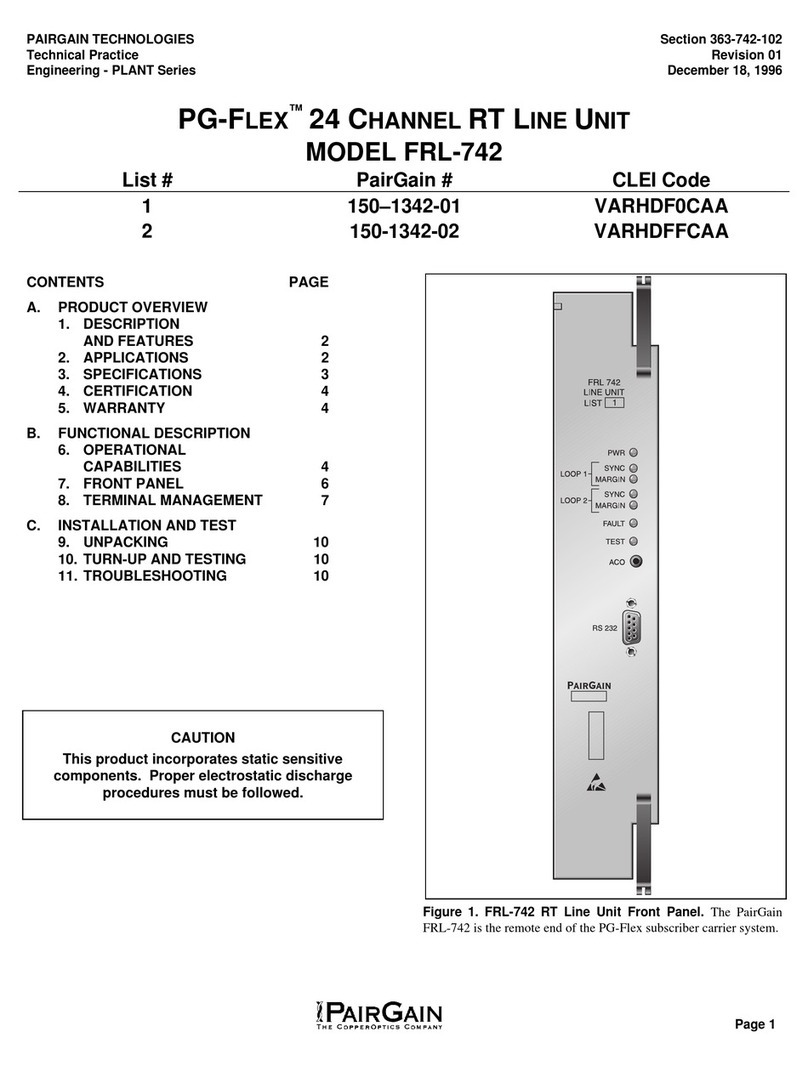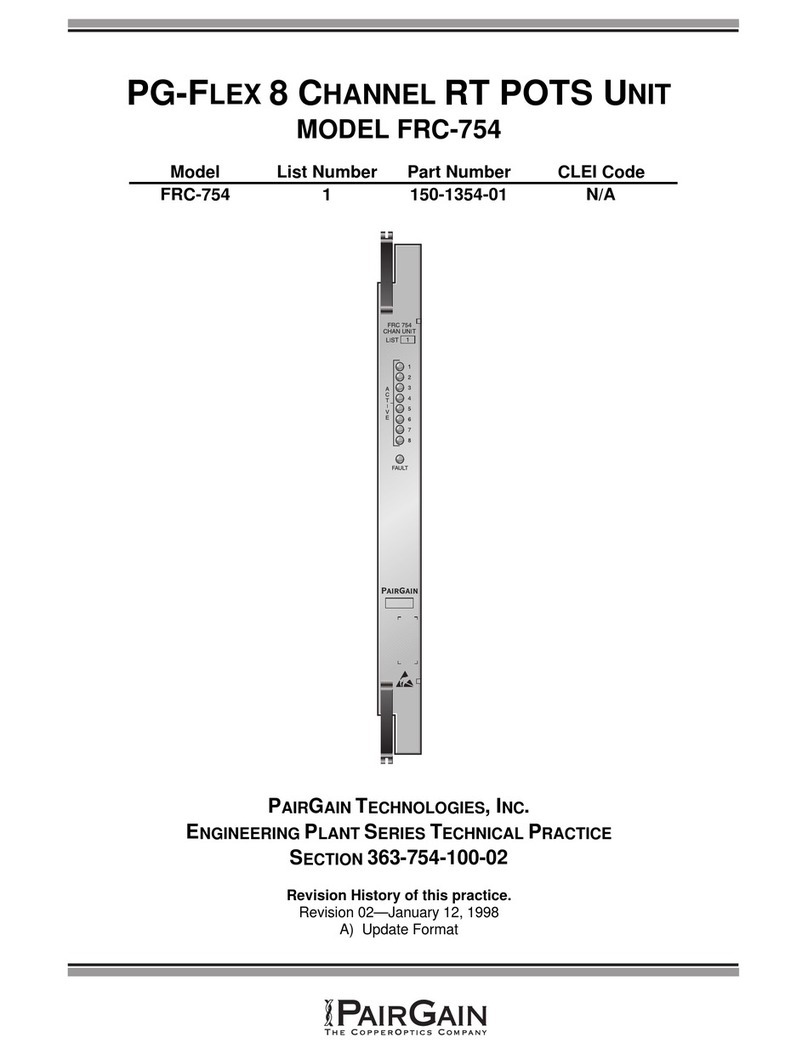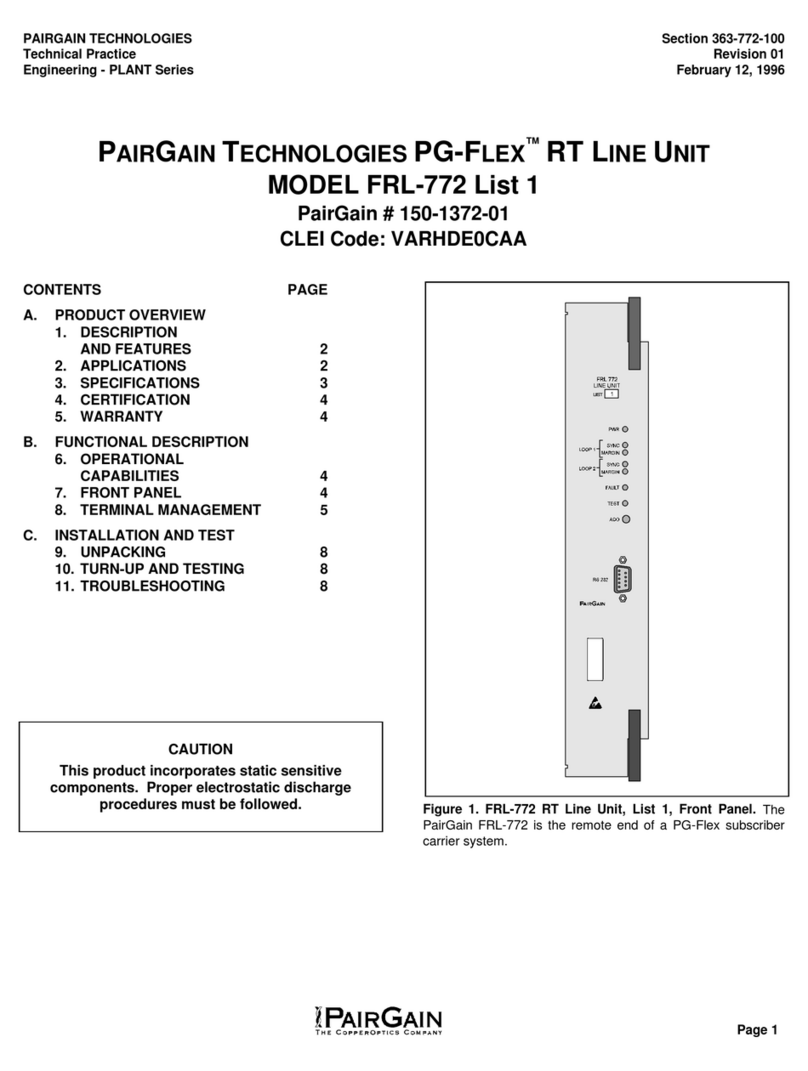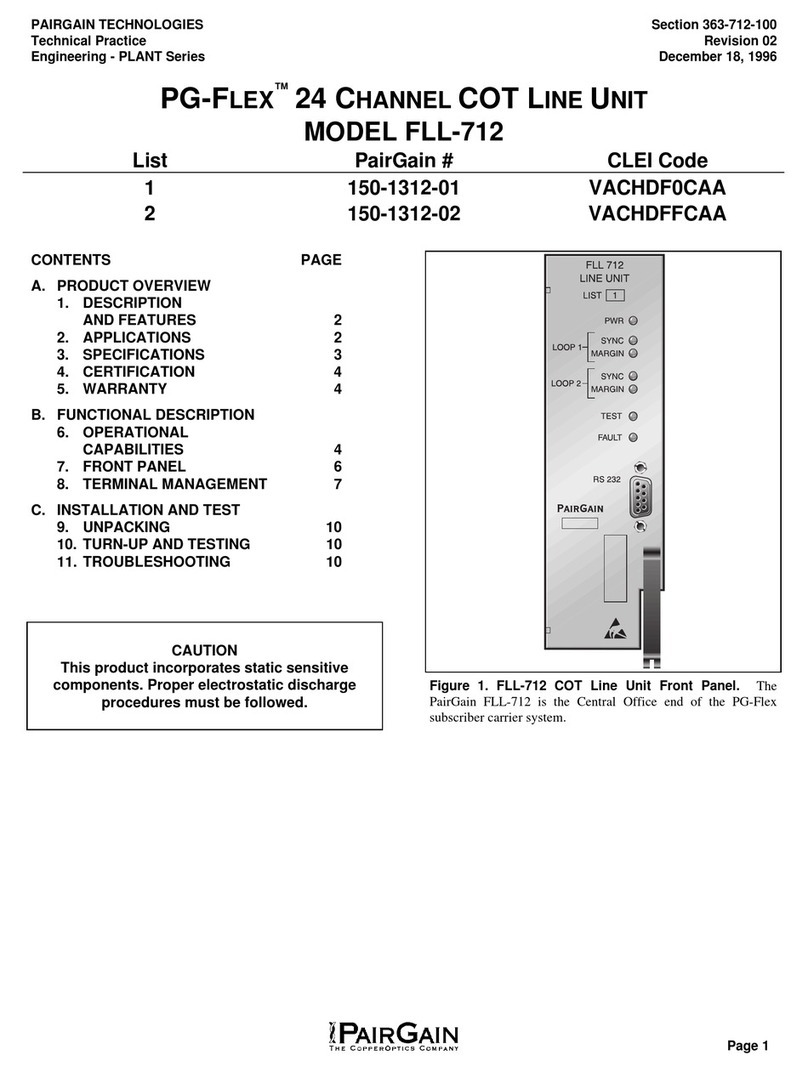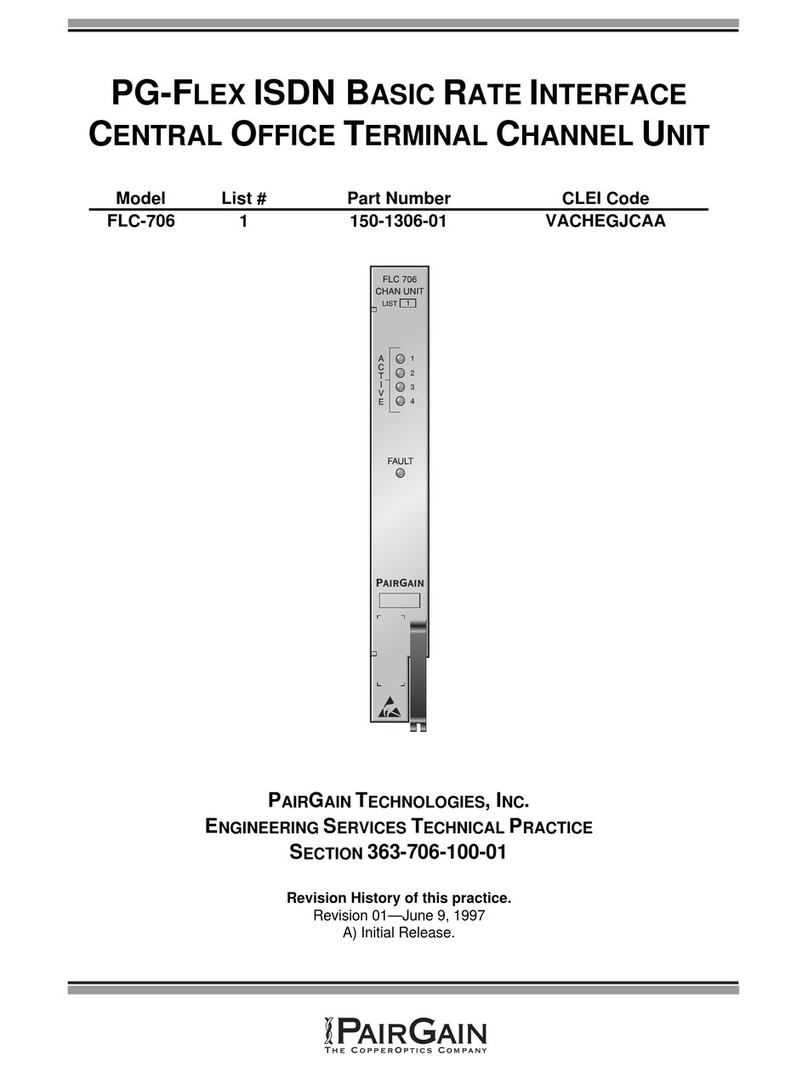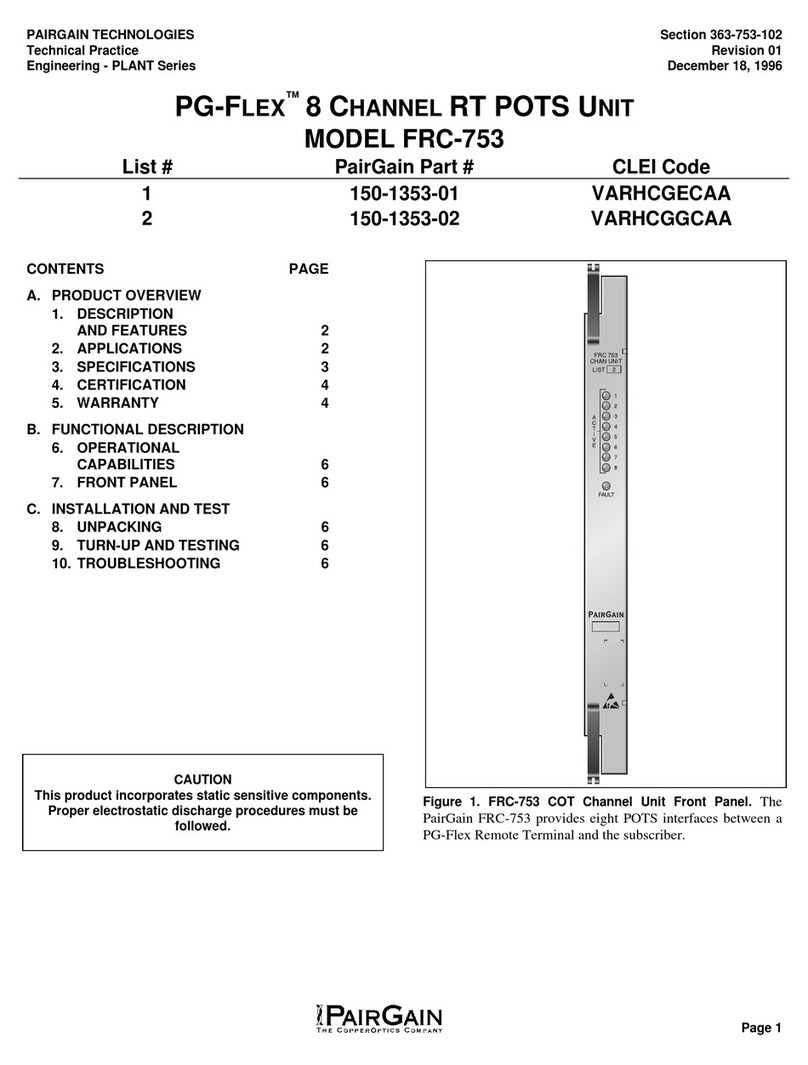
Section 150-319-251
Revision 01
Page 4
5. WARRANTY
5.01 PairGain Technologies warrants this product
to be free of defects and to be fully
functional for a period of 36 months from the date of
original shipment, given proper installation. PairGain
will repair or replace any unit without cost during this
period if the unit is found to be defective for any
reason other than abuse or improper use or
installation.
5.02 This module should not be field repaired. If
it fails, replace it with another unit and return
the faulty unit to PairGain for repair. Any
modifications of the unit by anyone other than an
authorized PairGain representative voids the
warranty.
5.03 If a unit needs repair, call PairGain for a
Return Material Authorization (RMA)
number and return the defective unit, freight prepaid,
along with a brief description of the problem, to:
PairGain Technologies, Inc.
14402 Franklin Avenue
Tustin, CA 92680
ATTN: Repair and Return Dept.
(714) 832-9922
(800) 638-0031
6. TECHNICAL ASSISTANCE
6.01 PairGain Technical Assistance is available
24-hours-a-day, 7-days-a-week by
contracting PairGain’s Customer Service
Engineering group at one of the following numbers:
Telephone: (800) 638-0031 or (714) 832-9922
Fax: (714) 832-9924
During normal business hours (8:00 AM to 5:00 PM,
Pacific Time, Monday - Friday, excluding holidays),
technical assistance calls are answered directly by a
Customer Service Engineer. At other times, a
request for technical assistance is handled by an on-
duty Customer Service Engineer through a callback
process. This process results in a callback within 30
minutes of initiating the request.In addition, PairGain
maintains a computer bulletin board system for
obtaining current information on PairGain products,
product troubleshooting tips and aids, accessing
helpful utilities, and for posting requests or
questions. This system is available 24-hours-a-day
by calling (714) 730-3299. Transmission speeds up
to 28.8 kbps are supported with a character format
of 8-N-1.
B. FUNCTIONAL DESCRIPTION
7. OPERATIONAL CAPABILITIES
7.01 HiGain utilizes PairGain's 2-Bits-1-
Quaternary (2B1Q) HDSL transceiver
systems to establish two full-duplex 1040 Kbps data
channels between the ELU-319 and an ERU-412
HiGain Remote Unit. This provides a total capacity
of 2.080 Mbps between the two units - 2.048 Mbps
for the G.703 interface and 32 Kbps of overhead.
7.02 A block diagram of the ELU-319 is shown in
Figure 2. The HiGain ELU-319 receives a
2.048-Mbps data stream from the G.703 digital
cross-connect interface.
7.03 The ELU-319 contains a demultiplexer that
generates two parallel 1040 kbps data
streams. Each data stream consists of HDSL
frames that are nominally 4704 bits (4.5
milliseconds) in length. Each frame contains a 14-
bit Frame Sync Word (FSW), a 6-bit Cyclic
Redundancy Check (CRC), a 21-bit operations
channel and 16 of the 32 G.703 timeslots. The
demultiplexer provides frame synchronization for
each of the two HDSL channels. The multiplexer
and HDSL transceivers work under control of the
ELU-319 microprocessor and compensate for data
inversions caused by tip-ring reversals and for
channel swaps caused by pair reversals. The
HiGain system allows for tip-ring (pair) reversals, but
does not tolerate split pairs.
7.04 The two formatted HDSL channels pass to
the HDSL transceivers, which convert them
to 2B1Q format. The 2B1Q line code operates in
full-duplex mode on unconditioned pairs. The
transceiver's digital echo cancelers and adaptive
equalizers receive the signal from the remote end in
the presence of impairments and noise on the
copper pairs. HDSL channel 1 contains G.703
timeslots 1 through 16. HDSL channel 2 contains
G.703 timeslots 17 through 32.
7.05 The transceiver processes the HDSL
channels it receives and passes them on to
the ELU-319 multiplexer. The multiplexer removes
data link messages from the HDSL channels and
passes them to the microprocessor. This enables
the ELU-319 and the ERU-412 Remote Unit to
exchange operations messages and status. By
synchronizing to the FSW of each channel, the
multiplexer can reconstruct the original 2.048 Mbps
G.703 stream from the payloads of the two HDSL
channels. The CRC fields on the HDSL streams
